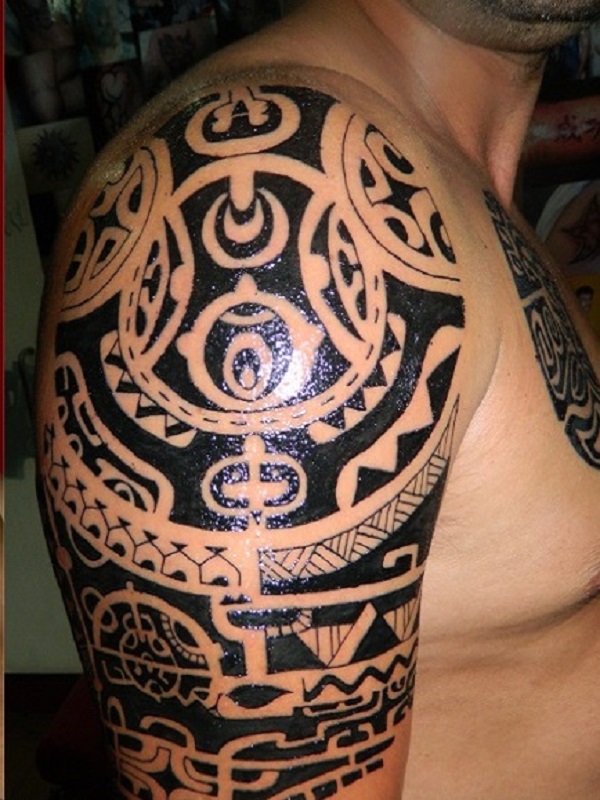Meaning of mandala tattoos
Mandala is the Sanskrit word for “circle”, and as a tattoo, is composed of shapes and symbols that radiate from the center outwards in a circular pattern. Like a circle, a mandala is meant to reflect balance, eternity, and perfection. For those who need a reminder in geometry, the distance from the centre of a circle to all points on it remains the same. The mandala is a unique design that emulates this sense of harmony.
You may recognize mandalas from religious sites like churches and prayer rooms. They have existed long before tattoos, in the artwork of Hindu, Buddhist and Christian religions. Ancient monks drew vivid and intricate mandalas on sand in temples. In Hinduism, a mandala is often embedded in the design of a room for prayer or meditation, because it is linked with focus. Buddhists also reserve a special place for mandalas in their meditation and rituals. The symbolism of balance in body and mind aligns with their beliefs and practices, as well as their reflections on eternity. Mandalas are also incorporated into the rose window designs of stained glass windows in Christian churches.
The blooming effect of a mandala tattoo also gives it the appearance of a flower. By combining floral and circular symbolism, a mandala can represent femininity and the blossoming of life. It may also represent a range of meanings from creation to growth and rebirth.
Mandala tattoos are undeniably mesmerizing. Their spiritual origins and substance give them even greater depth. This makes getting a mandala tattoo such an interesting prospect. It can mean so many different things to people, which means that your tattoo will always be special and unique.





